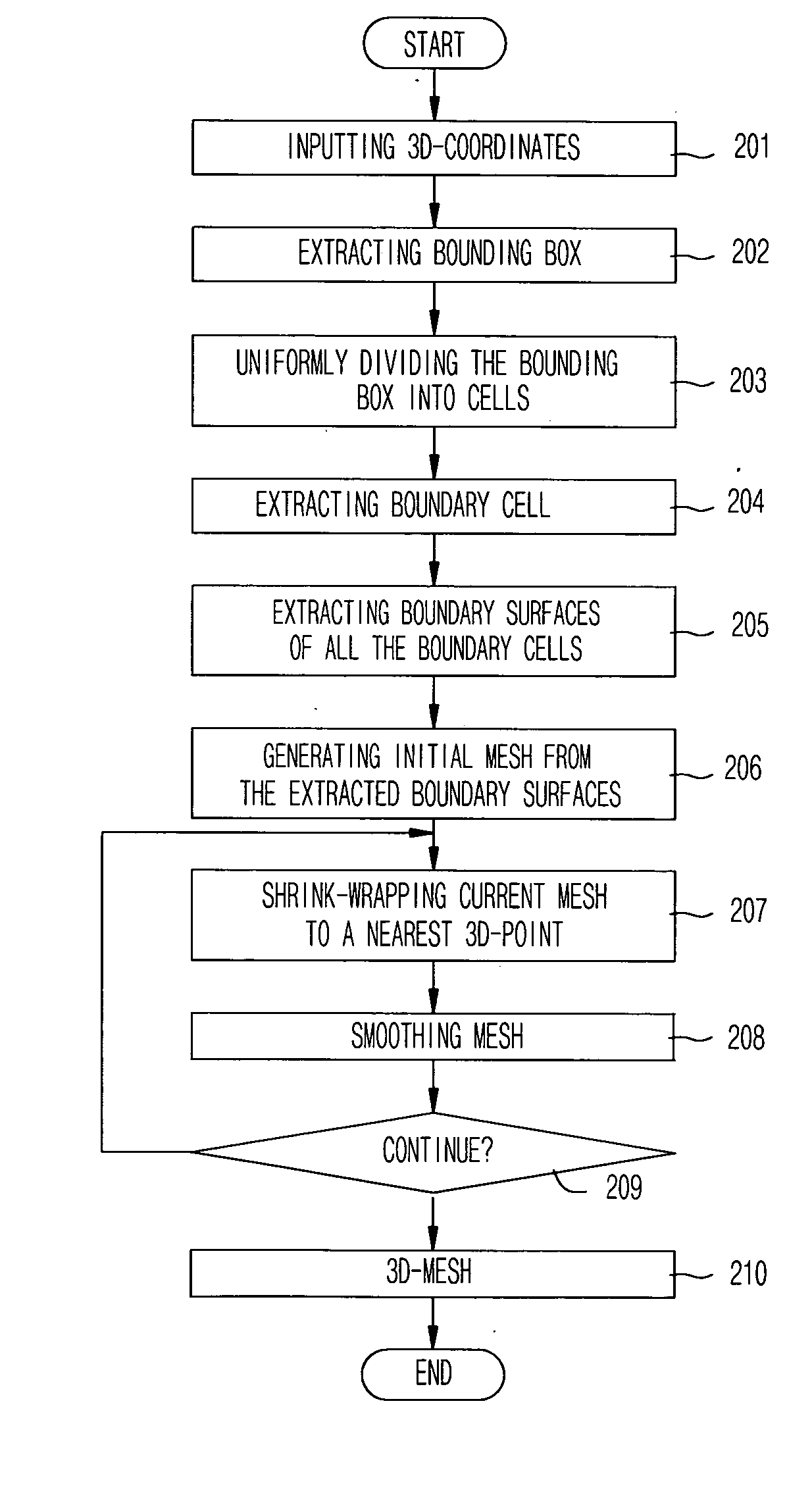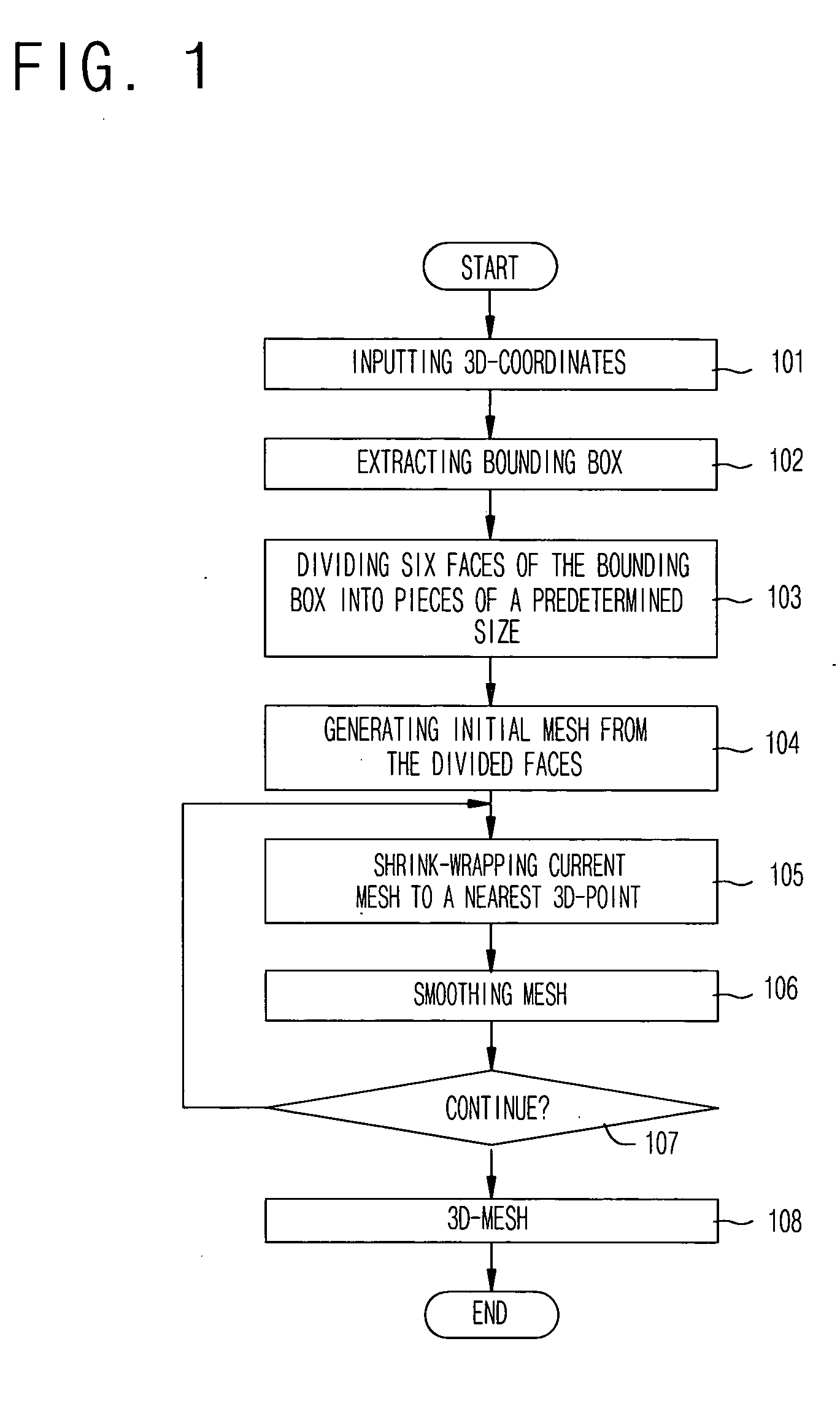Method for generating 3D mesh from 3D points by using shrink-wrapping scheme of boundary cells
a boundary cell and mesh generation technology, applied in the field of 3d mesh generation, can solve the problems of difficult to obtain a stable model in constituting a 3d surface, conventional mesh generation methods can be applied to a spherical shape, and cannot be applied to the case in which an object is present, so as to reduce the elapsed time for surface modeling
- Summary
- Abstract
- Description
- Claims
- Application Information
AI Technical Summary
Benefits of technology
Problems solved by technology
Method used
Image
Examples
Embodiment Construction
[0019] Reference will now be made in detail to the preferred embodiments of the present invention, examples of which are illustrated in the accompanying drawings.
[0020]FIG. 2 is a flowchart of a method for generating a 3D mesh from 3D points by using a shrink-wrapping scheme of boundary cells according to an embodiment of the-present invention.
[0021] When 3D mesh generation method starts, unorganized 3D coordinates extracted by a 3D scanner or a digitizer is inputted (201). A minimum bounding box including all the points is extracted (202). To extract the bounding box, the maximum and minimum values maxx, minx, maxy, miny, maxz, and minz is obtained with respect to all the inputted 3D coordinates in the directions x, y and z. A bounding box is extracted using six faces (x=minx, x=maxx, etc. 2 faces in the direction of each coordinate) according to equation 1.
minxx
minyy
minzz Equation 1
[0022] Then, the extracted box is uniformly divided into cells of a predetermined size (203)...
PUM
 Login to View More
Login to View More Abstract
Description
Claims
Application Information
 Login to View More
Login to View More - R&D
- Intellectual Property
- Life Sciences
- Materials
- Tech Scout
- Unparalleled Data Quality
- Higher Quality Content
- 60% Fewer Hallucinations
Browse by: Latest US Patents, China's latest patents, Technical Efficacy Thesaurus, Application Domain, Technology Topic, Popular Technical Reports.
© 2025 PatSnap. All rights reserved.Legal|Privacy policy|Modern Slavery Act Transparency Statement|Sitemap|About US| Contact US: help@patsnap.com



